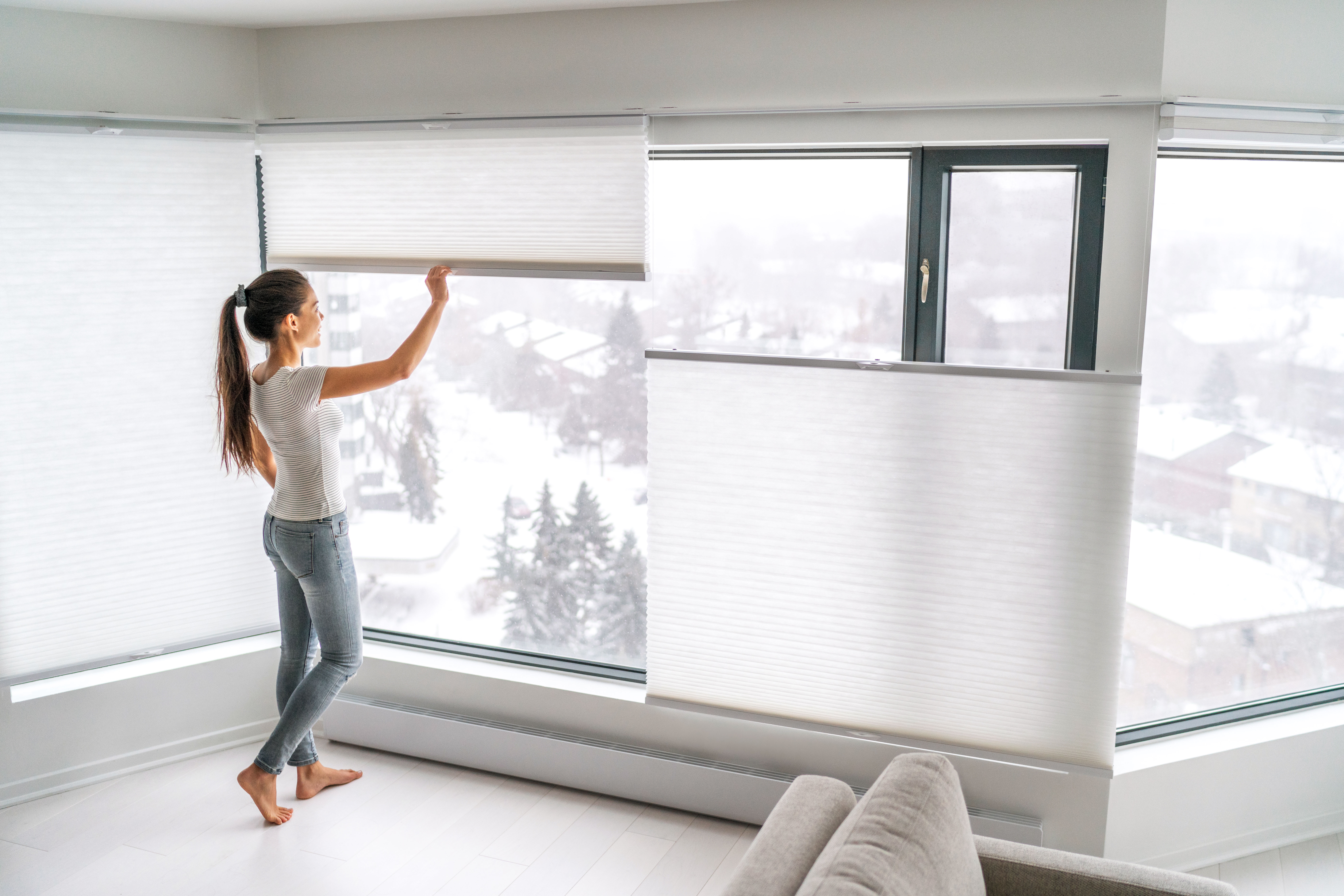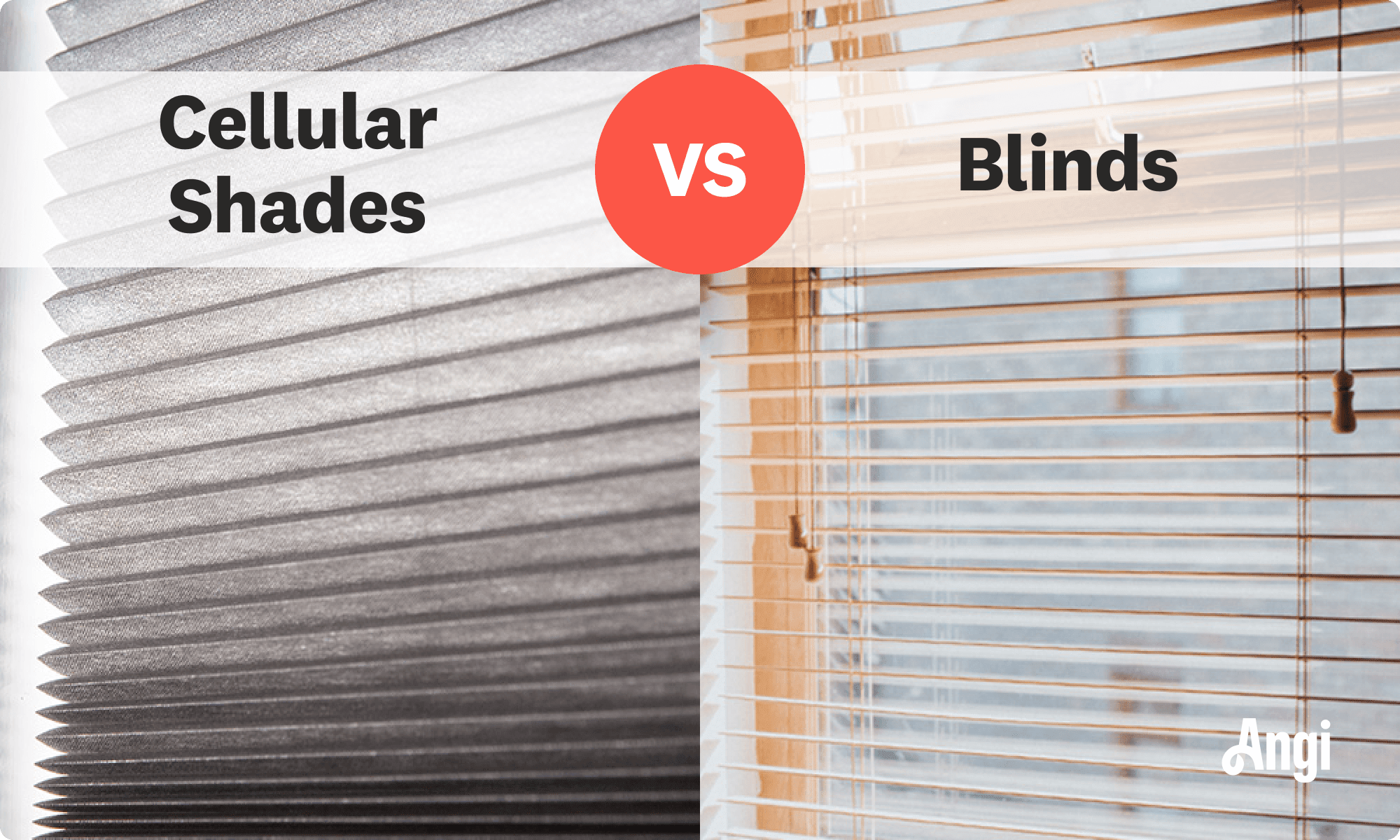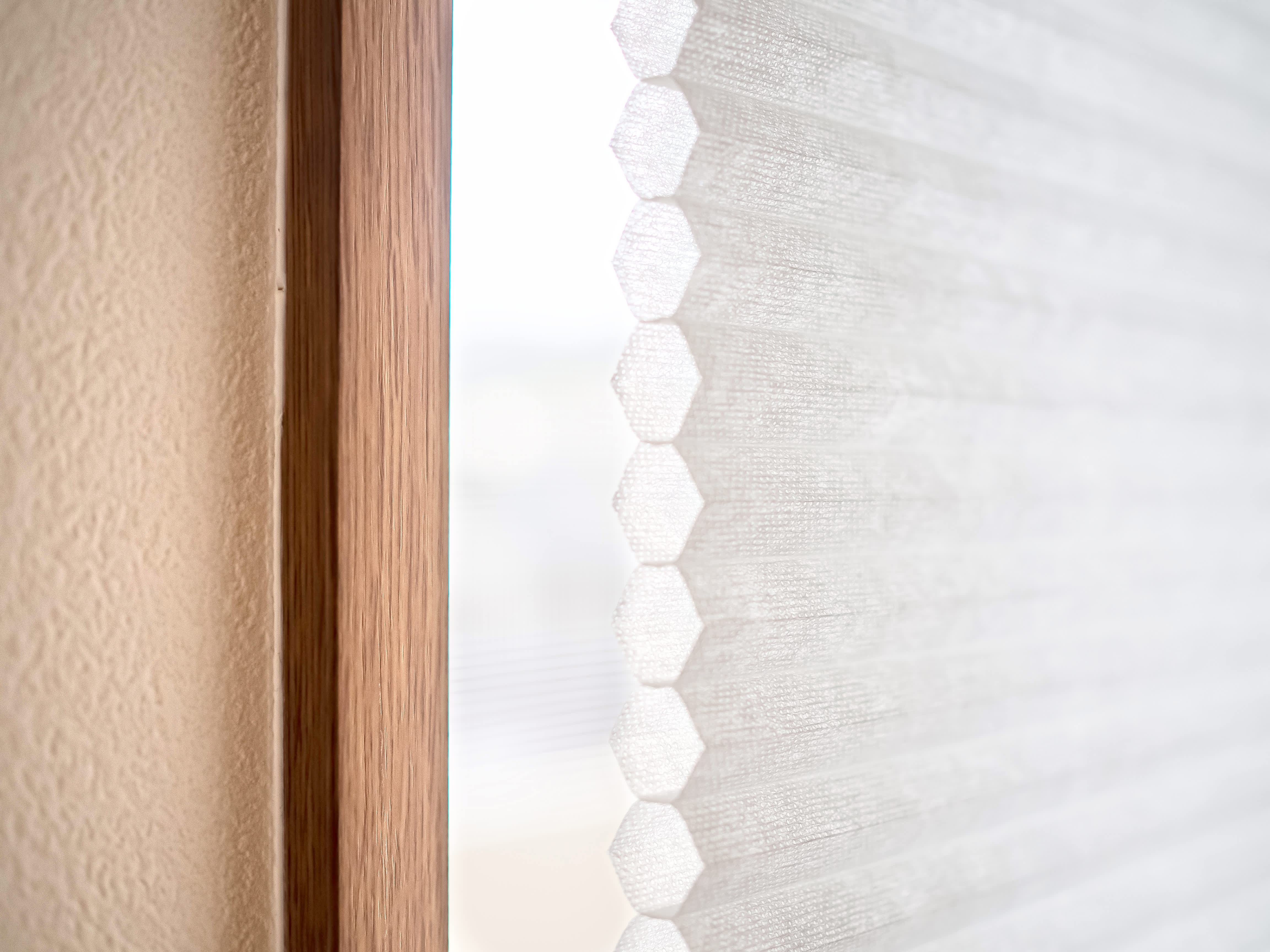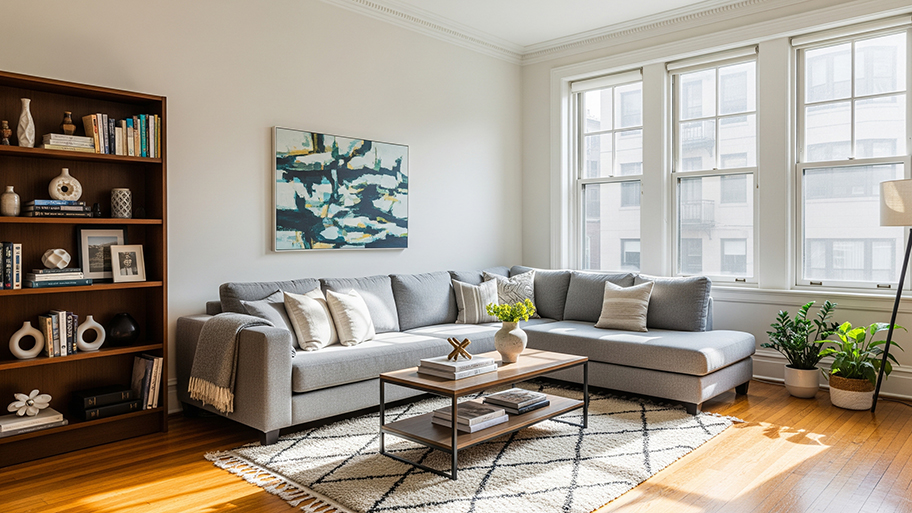
Looking to step up your home’s interior with window treatments? Use this guide to blinds installation cost to set an appropriate budget for your project.
Framing a clear case for the benefits of cellular shades


Cellular shades are also known as honeycomb shades because of their honeycomb-like design.
These shades are most known for their aesthetic appeal and energy efficiency.
Compared to traditional blinds or curtains, cellular shades are more expensive.
The biggest pane of cellular shades, besides cost, is their increased maintenance requirements.
Blinds, curtains, shades—oh my! When it comes to making a house a home, there are many types of window treatments to choose from, all of which offer privacy and light control, but with different benefits and looks. Cellular shades, also known as honeycomb shades, are a popular alternative to traditional (and noisy) aluminum blinds or heavy curtains.
Learn more about this versatile treatment option to see if it’s the right fit for your home.

Cellular shades are made of pleated fabric cells, similar to the structure of a honeybee’s home. Unlike traditional blinds, which use a cord to open and close, cellular blinds operate in a very simple manner: You simply push the bottom up to raise the shades or pull it down to lower them.
They’re energy efficient, good at diffusing light, and offer a streamlined appearance that can match most decor styles. However, they’re not as durable as other options (especially if you buy from low-cost retailers) and aren’t as easy to clean.
You’ll want to hire a local window treatment pro to install your cellular shades so that you don’t accidentally damage them during a DIY gone wrong.
These shades are pretty versatile, with many options to choose from to make them the perfect fit for your home.
Single- versus double-cell shades: Single-cell shades have one layer of fabric, while double-cell shades have two. Each layer creates an air pocket that increases insulation, so double-cell shades have greater insulation and noise reduction.
Opacity: You can choose your opacity, giving you flexibility on whether you want light filtering or room-darkening window treatments. Opacities range from sheer to opaque or blackout.
Control: Most cellular shades are cordless, although there are corded options. Some open from both the bottom up and the top down for more flexibility. You can also upgrade to motorized cellular shades, which can easily reach $2,600.
Pleat size: You’ll buy shades with pleat sizes that match your window. So, if you’re covering a small window, you can get small pleats; large windows get large pleats.
Material: Some cellular shades are made with paper, which makes them very affordable but easily damaged. Fabric—like polyester, natural fibers, or vinyl—is a sturdier choice, if your budget allows. Both materials come in a variety of colors for the perfect match.

While there are a lot of benefits to cellular shades, we don’t want you to get blind sided by some of the drawbacks.
Highly customizable: With various shapes, sizes, colors, fabrics, and openings, cellular shades are highly customizable to your needs.
Very energy efficient: Cellular shades, especially double-cell ones, are very energy efficient and can lower your energy bills.
Sleek look: It’s hard to beat the look of cellular shades, especially if you’re upgrading from aluminum blinds. Plus, you can pick from a variety of colors and fabrics to match your specific style.
Reduces noise: In addition to filtering out light, cellular shades also filter noise, which is especially useful for nurseries or even as a window treatment for sliding glass doors.
Avoid submerging cellular shades in water as this could permanently damage their shape and lead to rust. You’ll want to only wipe them with a damp cloth and dry thoroughly.
More expensive: Compared to the cost to install blinds, cellular shades can be on the more expensive side. Choose paper cellular shades if budget is your top concern.
Not suitable for kitchens or bathrooms: Rooms with higher humidity shouldn’t use cellular shades, as the fabric can hold on to moisture and grow mold.
Harder to clean: The process for how to clean cellular shades is a bit more complicated and time-consuming than just getting out a duster.
From average costs to expert advice, get all the answers you need to get your job done.

Looking to step up your home’s interior with window treatments? Use this guide to blinds installation cost to set an appropriate budget for your project.

Estate shutters can add a stately appearance to your home and block out light. Learn how much estate shutters cost, depending on window size and material.

Blinds installation costs in Columbus, Ohio, are higher than the national average. Invest in moisture-resistant materials to handle humid conditions.

Installing blinds lets you control the amount of light and privacy in your room. Learn how to measure for blinds to get the perfect fit the first time.

Frayed blind strings can make your window blinds work ineffectively. Learn how to DIY restring blinds and fix cords in this step-by-step guide.

Even new, high-quality windows can allow noise pollution to enter your home if not correctly installed. Here’s what you need to know about why your new windows are letting in more noise and what you can do to fix the problem.